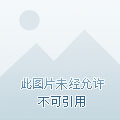Whooping cough, an acute respiratory infectious disease caused by Bacchillus pertussis, typically presents with a spasmodic cough and a "chicken chirping" echo. Even in areas where high vaccine coverage has been achieved, pertussis presents a cyclical epidemic every 2 to 5 years.
Pertussis-like syndrome refers to a group of syndromes similar to pertussis symptoms, the etiology is complex, and common pathogens include adenovirus, respiratory syncytial virus type 3, influenza virus, bacillus parapertussis, Mycoplasma pneumoniae, chlamydia, etc.
Pertussis is a single pathogen but can cause serious complications, especially in infant and young children, including apnea, bradycardia, severe pneumonia, epilepsy, and death. Pertussis-like, pathogenic bacteria are complex and diverse, and the treatment can be different. If it can be differentiated early in the disease, it can be of great benefit to treatment.
This article summarizes whooping cough and whooping cough-like from the perspective of disease identification, treatment and prevention.
differential diagnosis
It is difficult to distinguish whooping cough from whooping cough from whooping cough-like cough from clinical manifestations alone, and laboratory tests are required, of which etiological testing has a prominent position.
Summary as shown in Table 1

Therapeutic medication
Children with paroxysmal spastic cough, elevated peripheral blood leukocytes, and predominantly elevated lymphocytes should be tested for Boltella pertussis PCR as soon as possible. Early diagnosis and treatment are expected. Patients with whooping cough can reduce or even eliminate the occurrence of cramps with antibiotics in the catarrhal phase.
Summary of antimicrobial selection for pertussis such as (table 2)
Summary of whooping cough-like treatment measures such as (table 3)
The general and symptomatic treatment of whooping cough can be referred to the corresponding section of Table 3.
Pertussis prevention
Vaccination remains an important measure in the fight against whooping cough.
WHO guidelines recommend that vaccinations be achieved at 6 weeks of age and no later than 8 weeks of age. On the mainland, DTP vaccine is still given at 3 months of age. Completes 3 basic immunizations within 6 months of age, each time at an interval of 1 month. Strengthen once between 18 and 24 months of age.
In addition, adults with cough should be avoided from contact with infants who have not completed the pertussis vaccination program.
Audit expert: Li Zhiling Deputy chief pharmacist
Curated: Sunny days
Title image source: Stand Cool Helo
bibliography:
[1] Yeung KHT, Duclos P, Nelson EAS, et al. An update of the global burden of pertussis in children younger than 5 years: a modelling study. Lancet Infect Dis, 2017,17(9):974-980.
Deng Jiyue, Yu Hui. Diagnosis and treatment recommendations for chinese children with pertussis[J]. Chin J Pediatrics,2017,55(08):568-572.
Xie Jinhong, Peng Donghong. Etiological analysis of 491 cases of pertussis syndrome in children[J]. CJPP,2019,34(03):230-234.
Wang Kun, Wang Yuqing, Hao Chuangli, et al. Clinical features of whooping cough and whooping cough-like syndrome in children[J]. International Journal of Pediatrics,2018,45(06):470-473.
[5] Cherry JD. Pertussis in Young Infants Throughout the World.Clin Infect Dis,2016,63(suppl 4):S119-S122.
Zhou Pengxiang, Zhou Wei, Wang Xiaoling, et al. Interpretation of the "Guidelines for Rapid Recommendations for the Use of Pediatric Azithromycin Injection"[J]. Journal of Clinical Pharmacotherapy,2019,17(07):39-45.
Du Shuang, Lu Qi. Clinical research progress of whooping cough in infants[J]. Pediatric Pharmacy,2022,28(04):62-66.
[8] WHO. Pertussis vaccines: WHO position paper, August 2015.Wkly Epidemiol Rec.2015,90: 433-58.
Hu Y Q, Duan Kai, Li X G, et al. Establishment of a new process for purification of component acellular pertussis vaccine[J]. China Journal of New Drugs,2018,27(21):2498-2504.
Chinese Preventive Medicine Association, Chinese Preventive Medicine Association Vaccine and Immunization Branch. Expert consensus on China's pertussis action plan[J]. Chinese Clinical Journal of Practical Pediatrics,2021,36(11):801-810.